Τον Ιούνιο του 2010, μια ομάδα επιστημόνων και εξερευνητών επισκέφτηκαν τις όχθες της λίμνης από λάβα που βράζει στο βάθος του κρατήρα Νιραγκόνγκο, στην καρδιά της περιοχής των Μεγάλων Λιμνών της Αφρικής. Η ομάδα είχε σαν όνειρο να περπατήσει στις όχθες της μεγαλύτερης λίμνης λάβας του κόσμου. Το θέαμα, Μοναδικό!
The view from the volcano’s rim, 11,380 feet above the ground. At 1,300 feet deep, the lava lake has created one of the wonders of the African continent.
......................................................................................................................
The permanent lava lake of the Nyiragongo is the biggest in the world, an estimated 282 million cubic feet of lava. In 1977 and 2002, the lava lake breached the crater, destroying a large part of the city of Goma in the Democratic Republic of Congo.
#At the surface of the lake, bubbles of gas explode. The surface is permanently churned by fury from the earth's crust.
#Even though the lava lake often overflows, the seven members of the expedition yearn to walk its shores. c
#Mount Nyiragongo is the most active of the eight volcanoes forming the Virunga range.
#At the beginning of the descent to the second terrace, falling rocks are a major risk. The gas often blinds the climbers.
#The expedition members need to tote a total of 1,300 pounds of equipment, food, and water -- enough for two days. The base camp is set up about 400 feet above the lava lake.
#To prepare for the expedition, members have undergone four months of training.
#Jacques Barthelemy, a mountaineer and veteran of Nyiragongo, uses a rope to bring bags of equipment to the second terrace.
#Volcanic gases heat the base camp. Members often need to don gas masks for sleeping.
#Using a laser telemeter, a member measures the changing size of the lava lake.
#Dario Tedesco, a volcanologist, collects gas to learn more about the volcanic activity.
#The hot gas condensates into a small puddle. Scientists say it is vital to take measurements in the crater over several periods in order to better understand the volcano and determine when it could erupt.
#At night, the base camp is illuminated by the light of the lava lake.
#The goal of the expedition is to reach the rim of the lava lake. Nobody has previously survived such an encounter.
#Members of the team keep in contact through radio and relay data about the lava lake's activities and the direction of the gases.
#Climbers must determine the best method for descent.
#Pierre-Yves Burgi collects gas near the bottom of the crater. The samples will be studied by Dario Tedesco, who was recently named as the head of Natural Risk Analysis and Prevention with the United Nations Office for Project Services.
#Bubbles of gas explode at the surface of the lava lake.
#Franck Pothé approaches the lava. For such a close encounter, the wind must be at his back, pushing the heat away. Pothé is constantly informed of the swirling winds via radio contact with other members.
#Marc Caillet is the first member of the team to reach the lake’s rim.
#Olivier Grunewald prepares his photographic equipment to protect it from temperatures that can reach 1,300 degrees.
#Approaching 282 million cubic feet of lava requires extensive protections.
#Encumbered by equipment, Olivier Grunewald must be guided by radio to where he can place his hands and feet.
#Grunewald, on the lava lake’s first close-up: "I was so overwhelmed by the spectacle of this surface and trying to take pictures, I had no idea of time, of heat ... suddenly the radio told me that it was time to go, the activity being too close.’’
#A major risk is the frequent overflows of the lake. Members surveying the lake from the second terrace help alert others to any threatening lava movements.
#At dawn, the light becomes magic, but gases could cover the bottom of the crater in a matter of seconds.
#









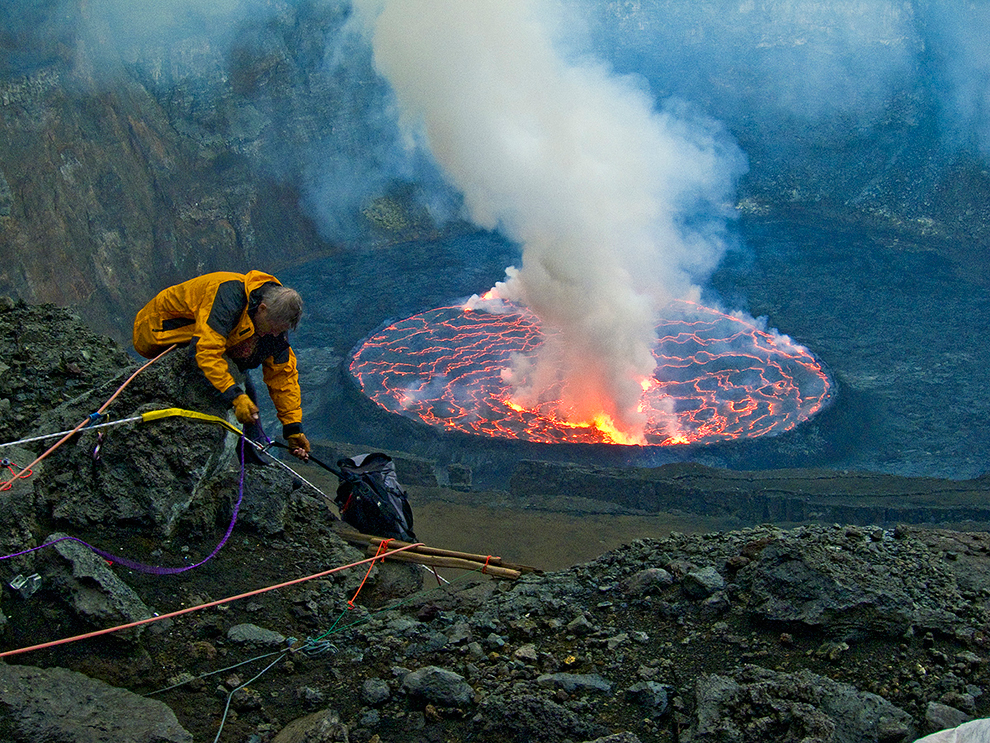

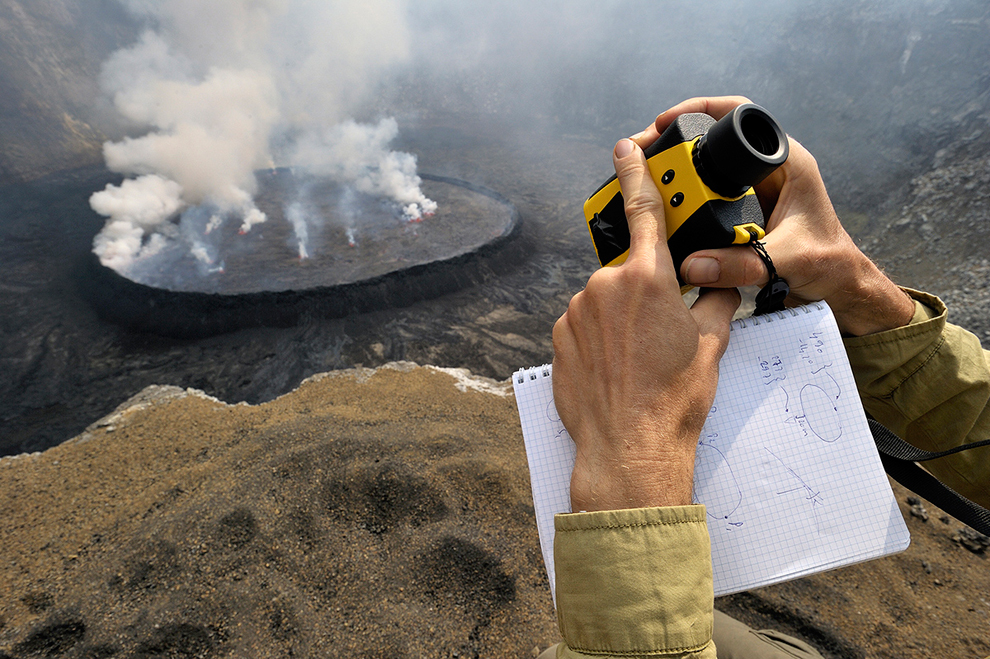

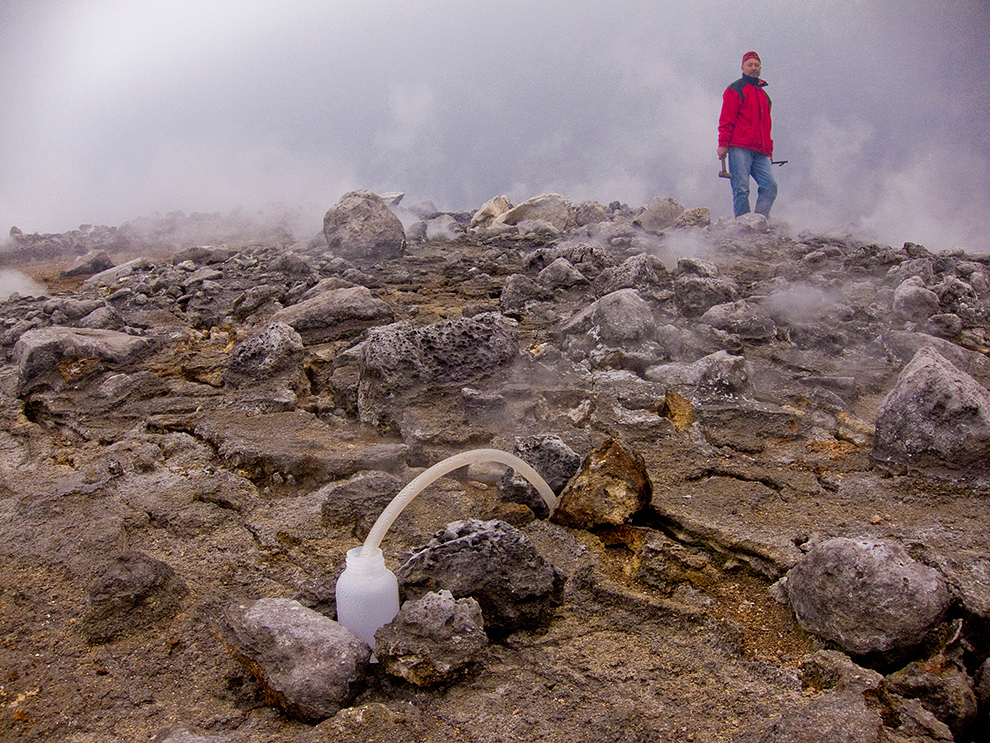



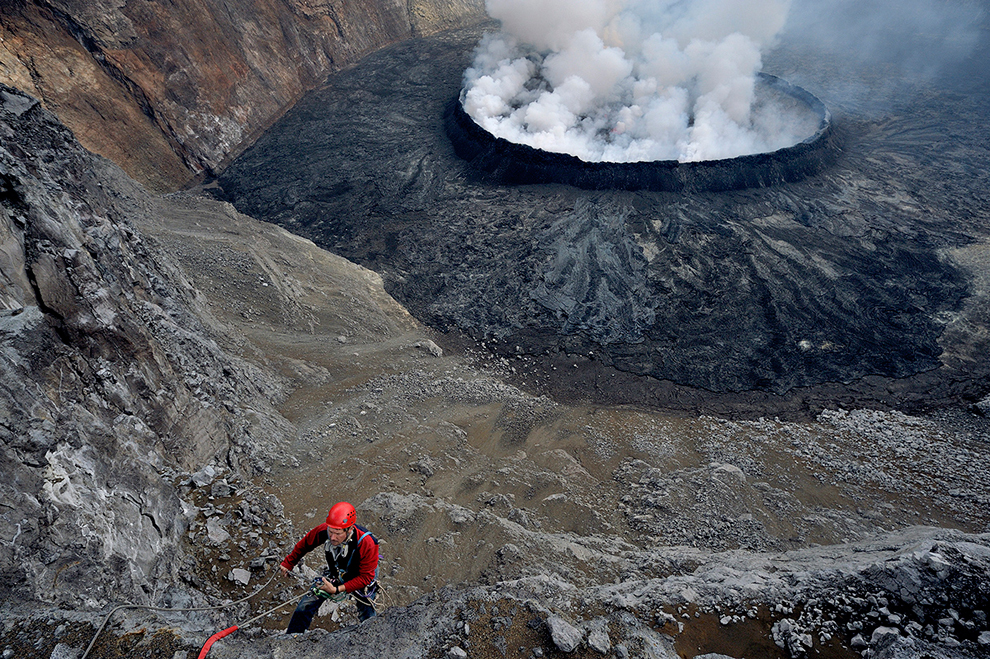
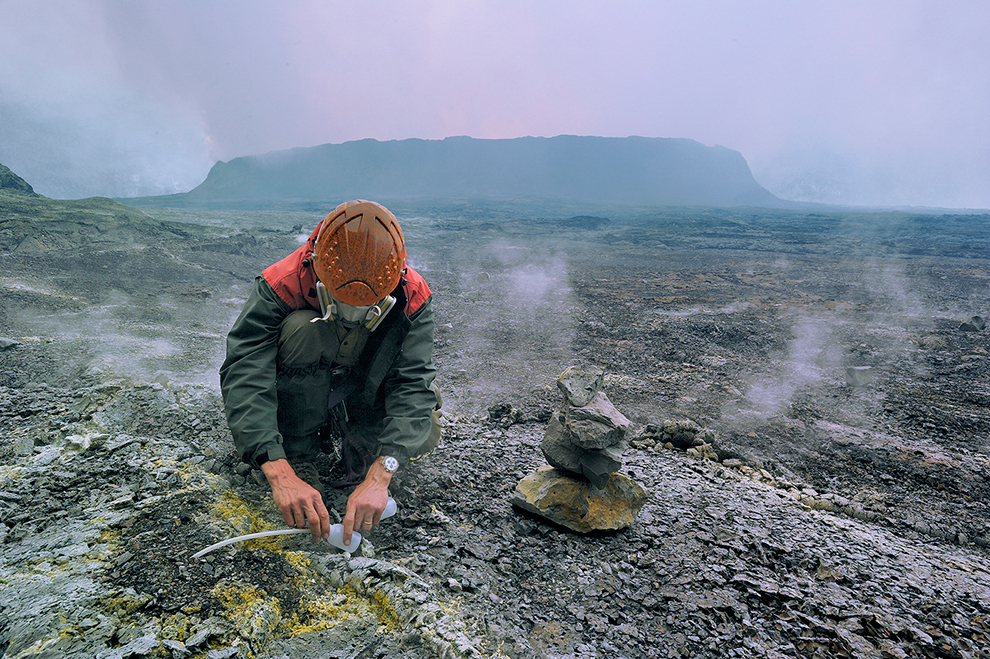
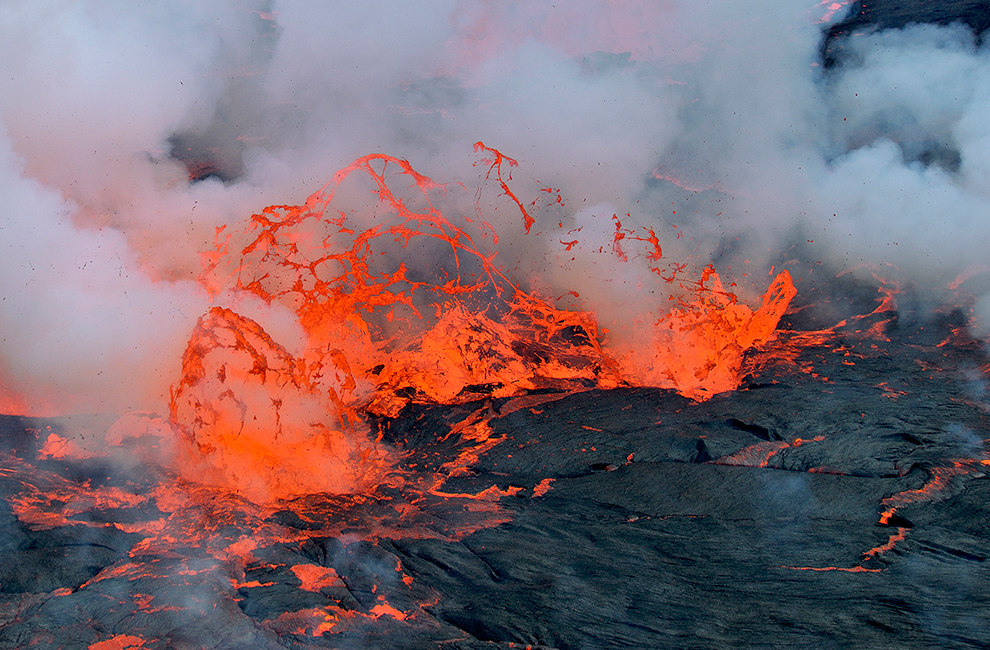


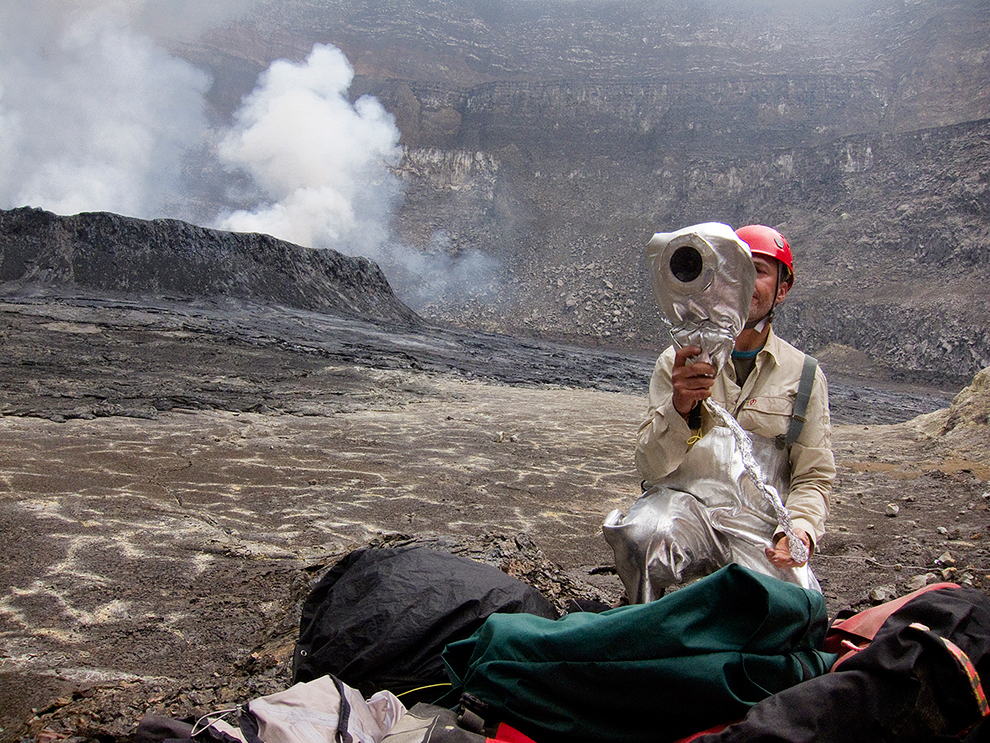
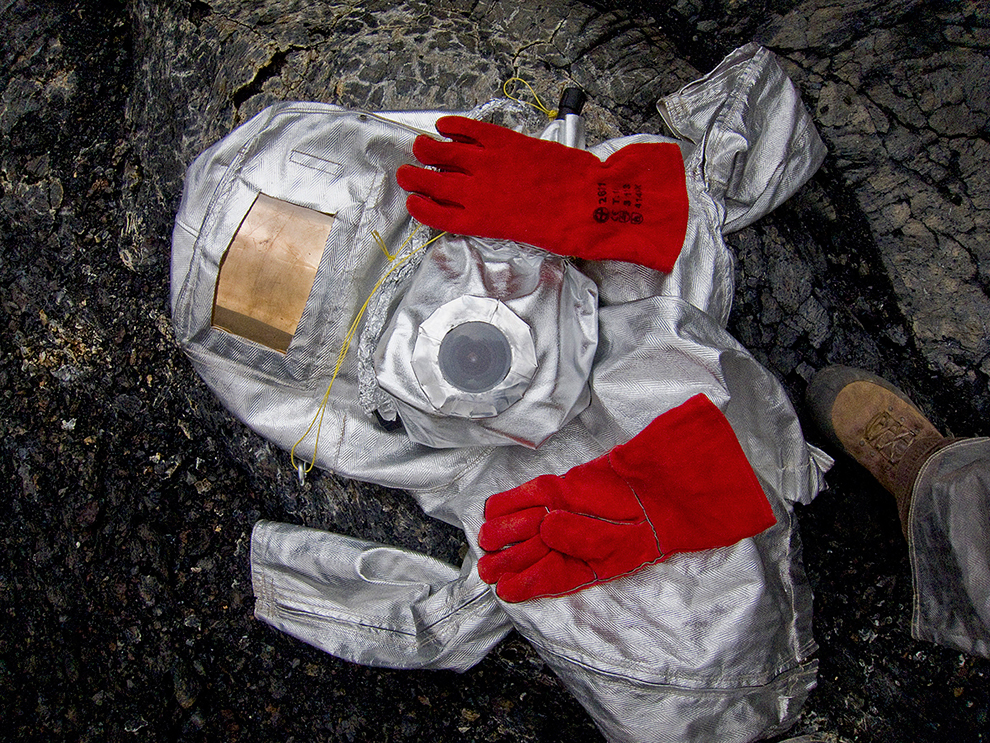

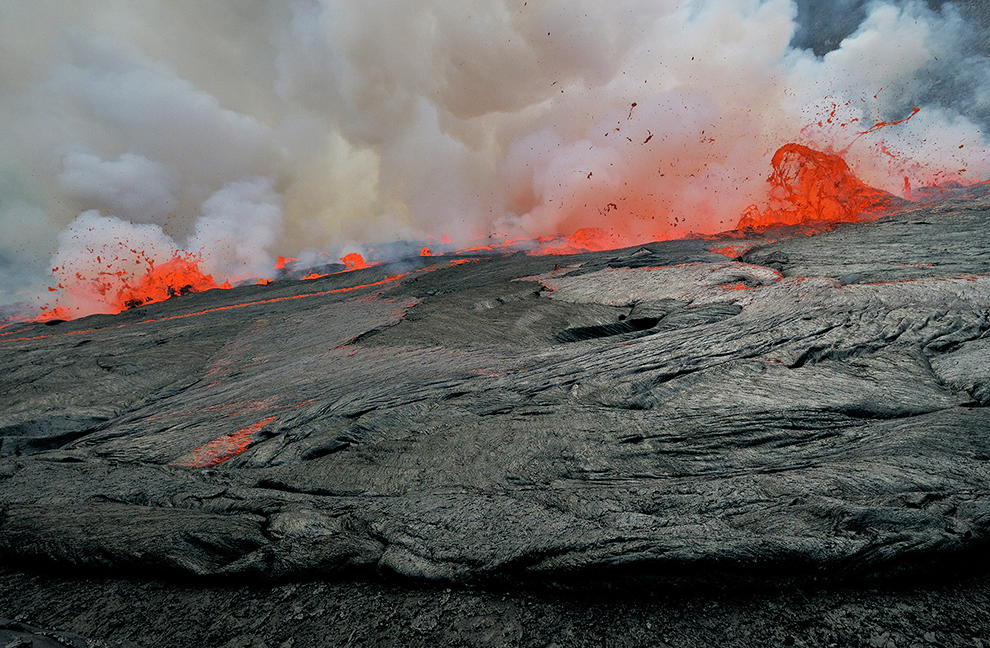
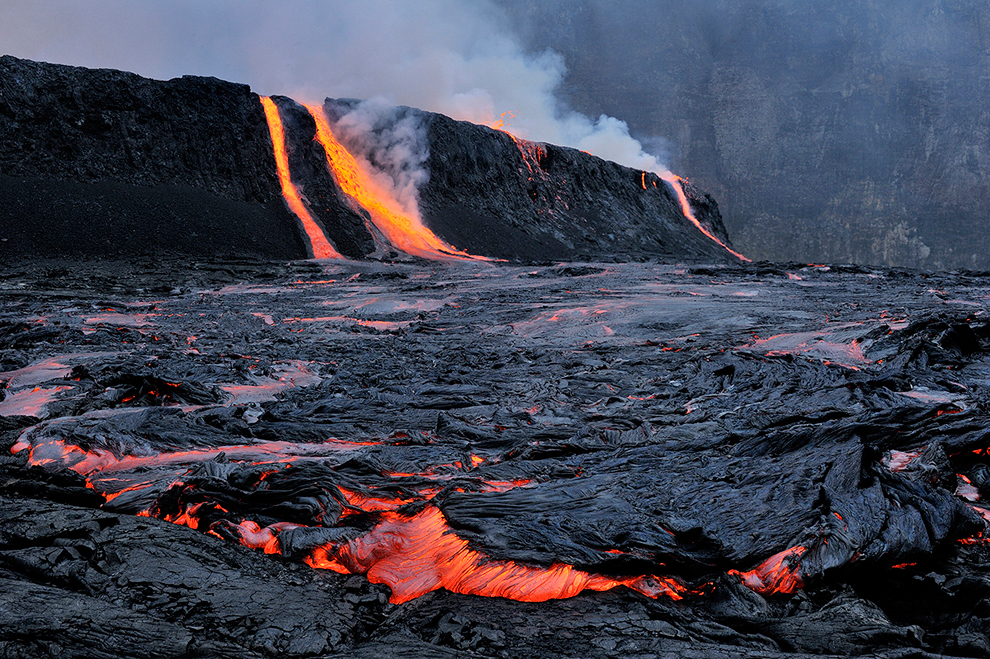

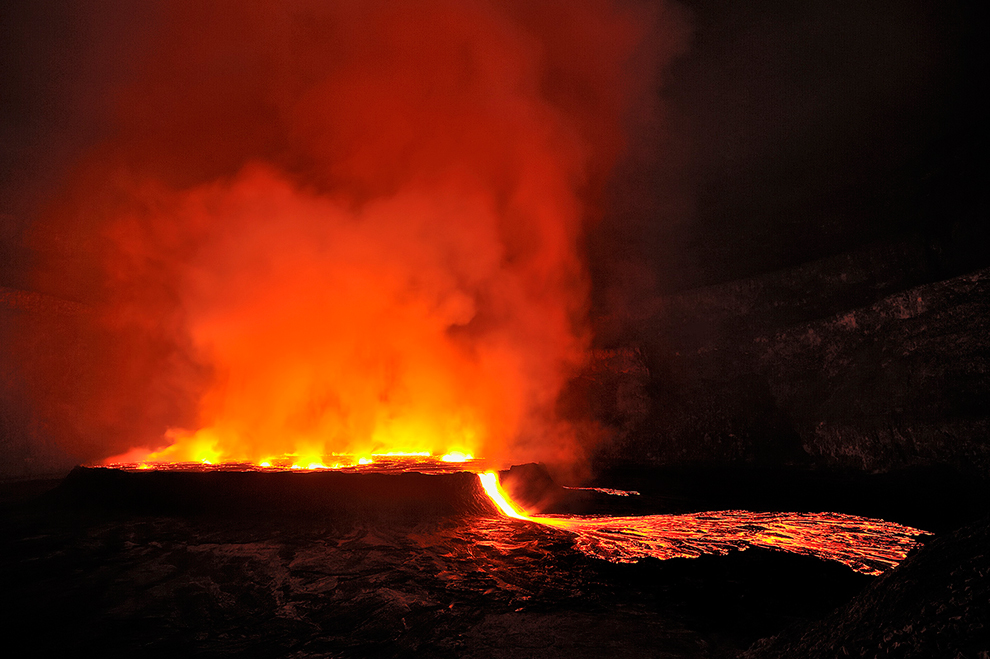


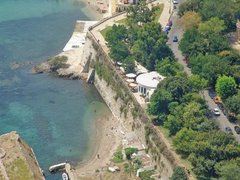
Δεν υπάρχουν σχόλια:
Δημοσίευση σχολίου